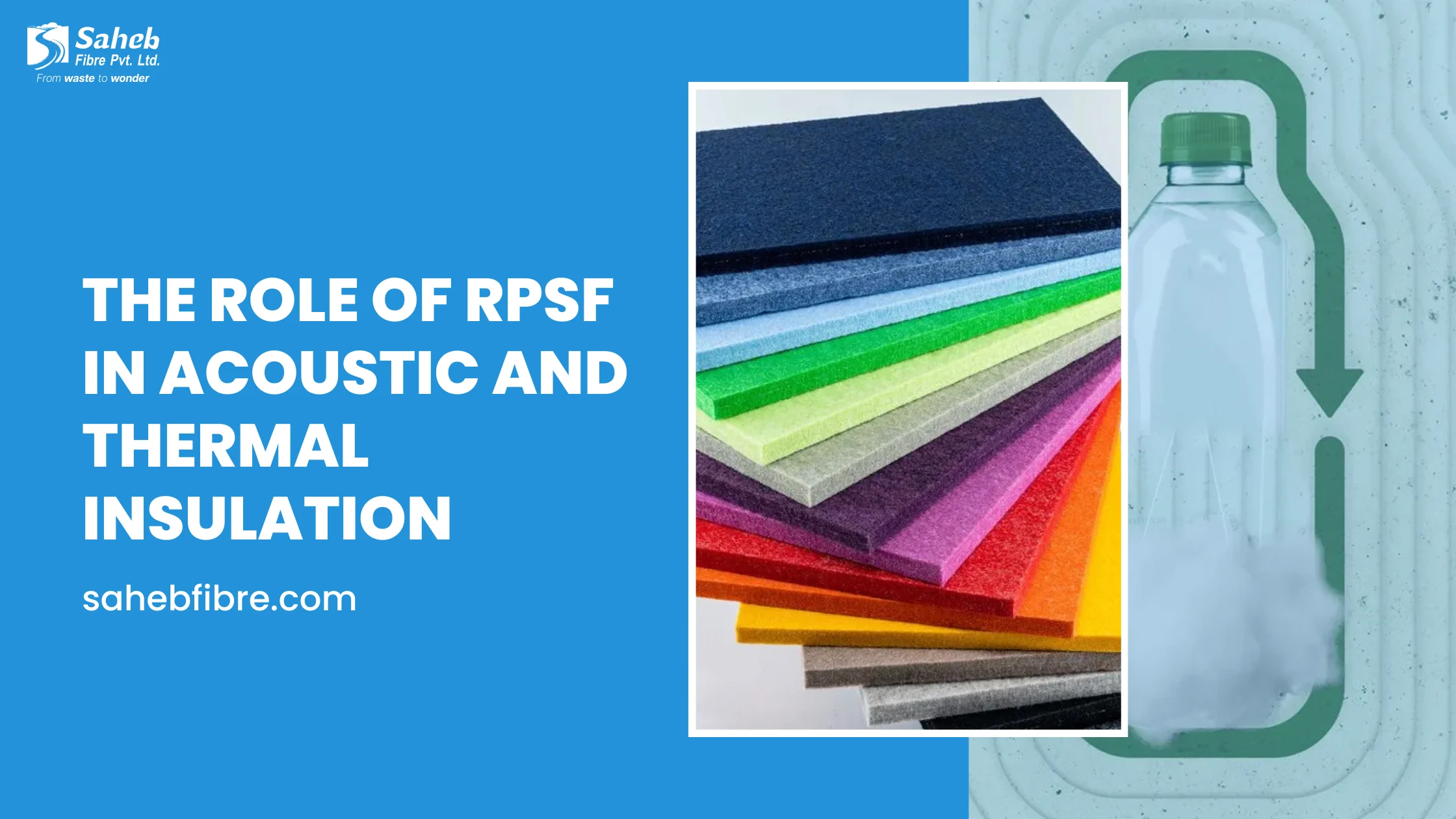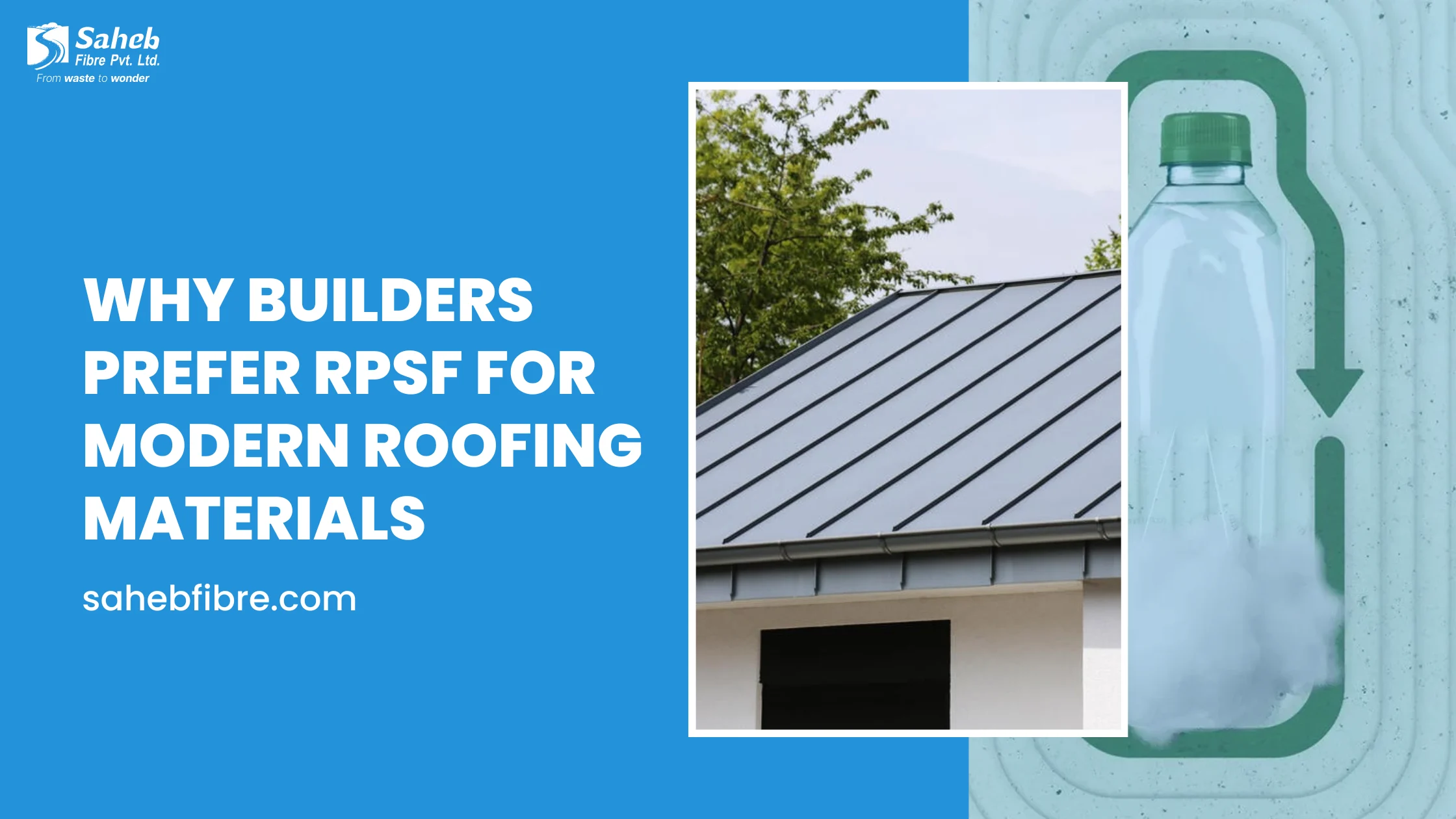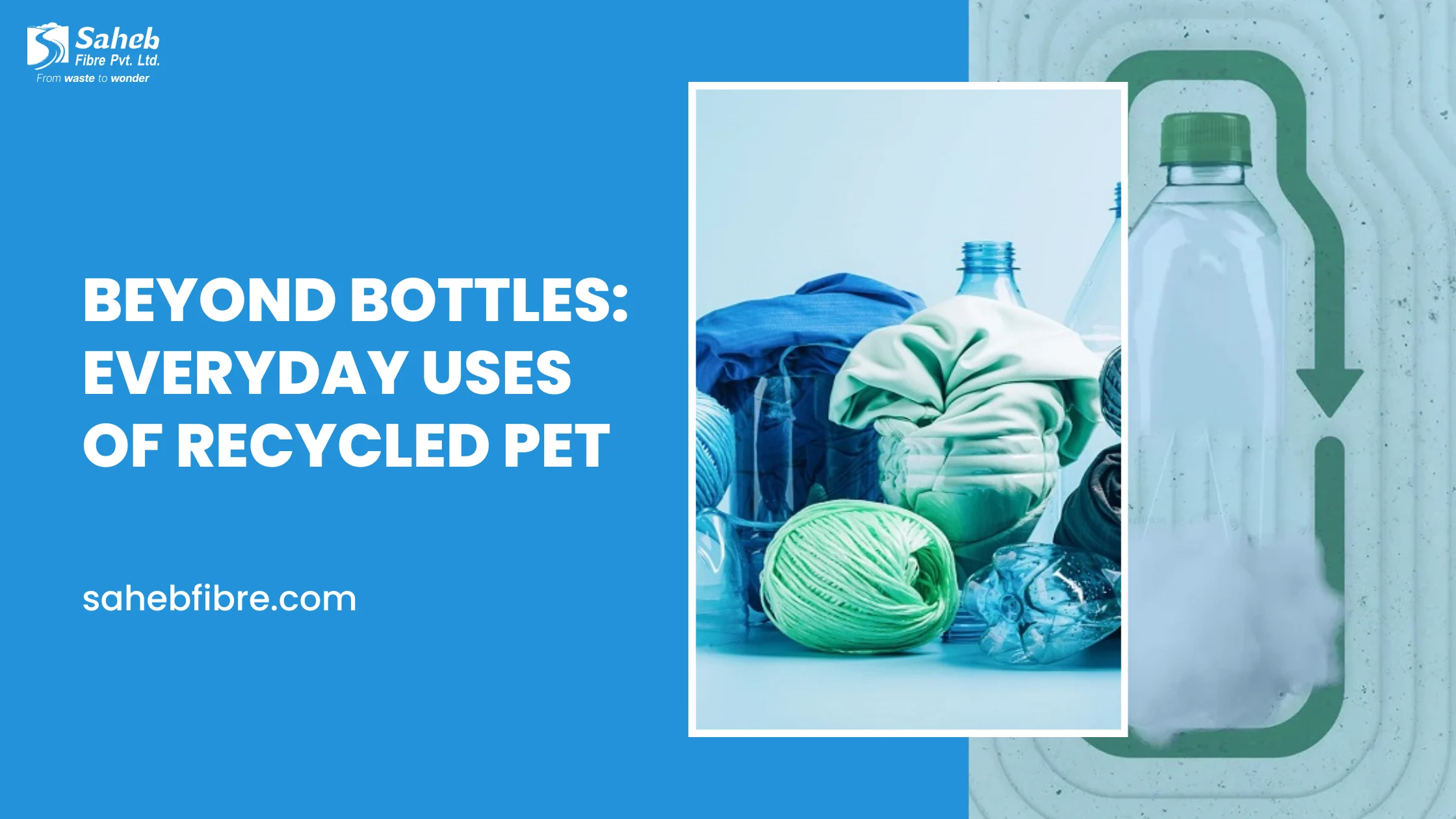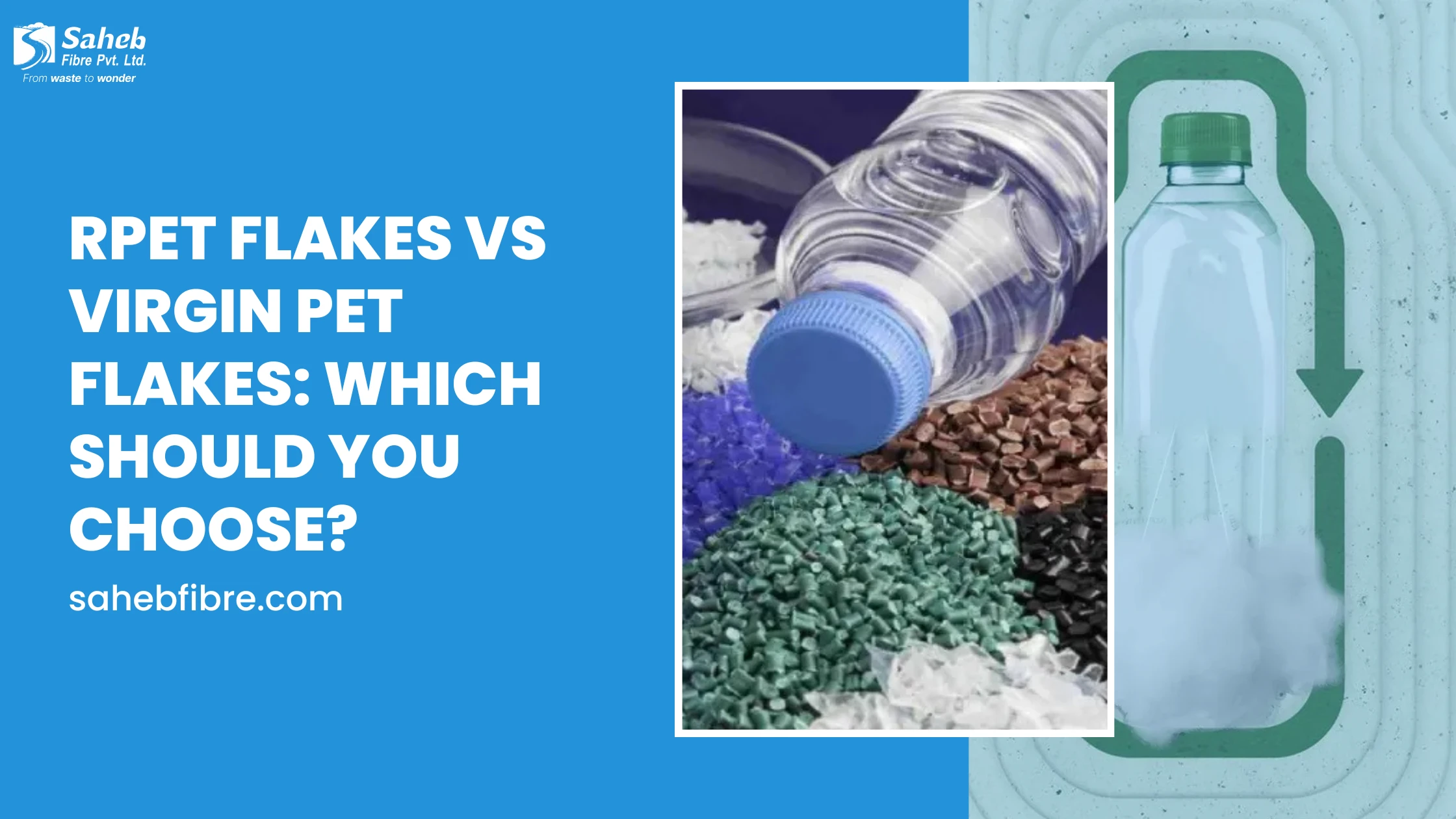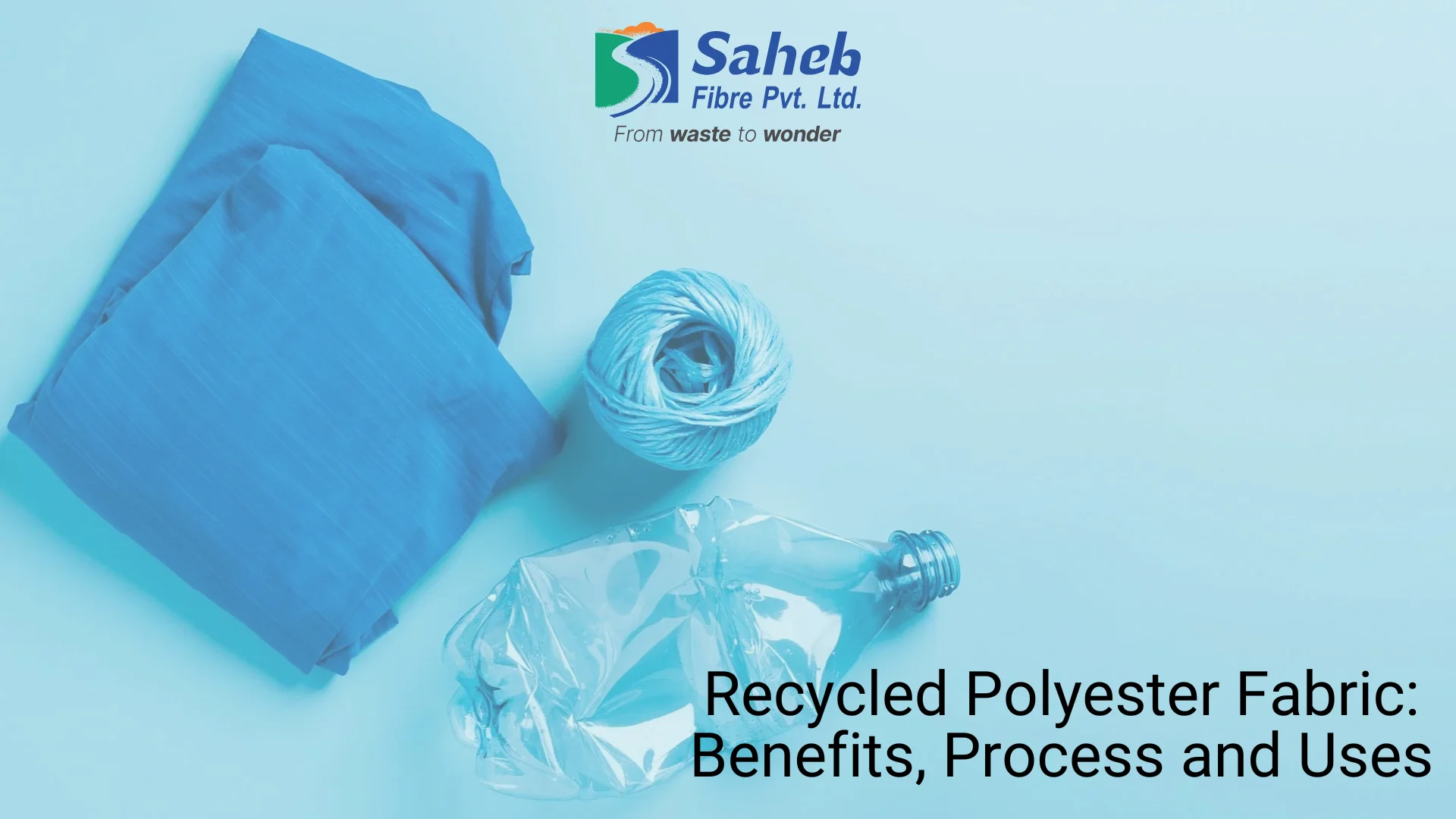
Whether it is the fashion runway or the industrial warehouse, recycled polyester fabric is leaving an impressive mark on sustainability, multi-functionality, and environmentally friendly materials. As the world is getting more exposed to the environmental issues brought about by plastic waste, recycled polyester is a solution, showing a balance between environmental sustainability and functionality. However, what is recycled polyester fabric, how is that created, and why is this such a critical element in creating a more sustainable future?
This blog will explore everything you need to know about recycled polyester fabric, including its benefits, the intricate recycling process, and its diverse applications across industries. In conclusion, you will know the reasons why this content has played a central role among the environmentally conscious people seeking eco-friendly textiles.
What Is Recycled Polyester Fabric?
Recycled polyester fabric, also named rPET polyester, is a type of textile created by repurposing plastic waste instead of using new, petroleum-based resources. It is mostly composed of polyethylene terephthalate (PET), the durable and strong plastic found mainly in clear plastic bottles and food containers.

Rather than letting PET plastics accumulate as waste in landfills and oceans, recycling converts them into high-quality fibers suitable for textiles. The outcome is the end product with the same durability, flexibility, performance, yet with a far lesser impact on the environment as compared to virgin polyester.
Environmental and Practical Benefits of Recycled Polyester Fabric
Choosing recycled polyester fabric over traditional materials offers a wide range of environmental and practical benefits, helping both the planet and consumers.
1. Reduces Plastic Waste
Recycled plastic fabric significantly contributes to resolving the plastic pollution problem the world faces. Each year, millions of tons of PET plastics, like recycled PET bottles and polyethylene bottles, are discarded and most of them are buried in landfills or even in oceans, polluting water. In raising plastics through recycling to manufacture useful fabrics, such plastics are taken out of the waste streams and given a different use.
2. Conserves Natural Resources
Non-renewable petroleum is used to manufacture virgin polyester. The manufacture of recycled polyester, by contrast, does not consume any fresh oil resources; therefore, it conserves the use of fossil fuels as well as neutralizes the negative extraction activities that affect the ecosystem.
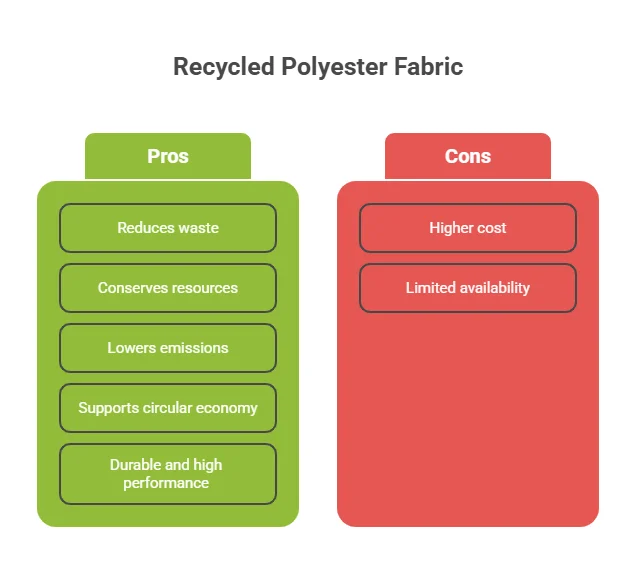
3. Lowers Greenhouse Gas Emissions
Manufacturing of recycled polyester uses much less energy when compared to the manufacture of virgin polyester. This energy-saving will be in terms of reducing the number of greenhouse gases emitted, and recycled polyester becomes a more eco-friendly option.
4. Supports Circular Economies
Recycled polyester clothing is the embodiment of a circular economy, as it involves recycling materials on a re-use basis rather than disposition. This way leads to reduction of waste and maximisation of resource lifecycle.
5. Durable and High Performance
Polyester fabric plastic alternatives like rPET have the same functionality as the virgin polyester in that it is sturdy, easy to wear, and resists moisture. This gives it excellent properties of active wear, outdoor apparel, upholstery and much more.
6. Consumer Appeal
Consumers in the current world care about the environment, and their resonance is associated with sustainable textiles. Companies that use recycled polyester fabric material usually become popular because of their environmental conservation initiatives, hence making their products stronger in the market.
How Is Recycled Polyester Fabric Made?
The process of turning waste into recycled polyester staple fiber involves several detailed steps. Here’s how the textile recycling process works:
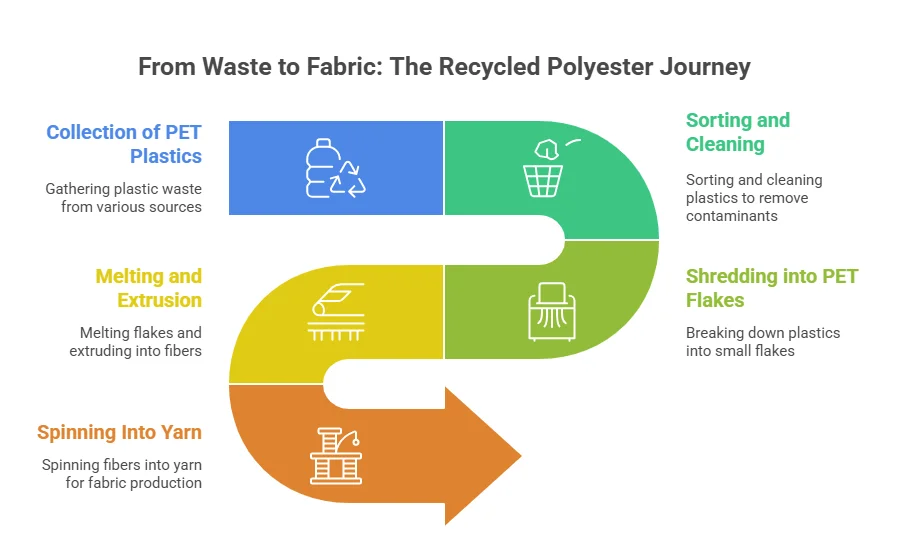
1. Collection of PET Plastics
This starts off by gathering plastic waste made of PET at the end of the production process and this includes wasted products made of plastic, used plastic packages, and unwanted polyester clothes. Such products, including clear plastic bottles and recycled PET bottles, are collected by curbside recycling systems, industrial waste recovery, or a coordinated collection program.
2. Sorting and Cleaning
After gathering, they are sorted according to the different types and colors. Non-PET material, such as the labels, caps and other contaminants, is eliminated. The sorted plastics are then thoroughly cleaned using hot water and detergents to remove the dirt, leftover food, and adhesives.
3. Shredding into PET Flakes
The purified plastics are broken down into small flakes called PET flakes, the raw materials to be manufactured into polyester fabric plastic. The flakes are then checked on quality and purity and are taken to the next stage.
4. Melting and Extrusion
The PET flakes are fused in melted state and extruded into thin sizes. This is achieved through heating the flakes to a point of semi-liquidity and then infusing the same through nozzles to form a strand of fiber.
5. Spinning Into Yarn
The fibers are spun to yarns that may further be dyed and weaved into fabric. The final pre-manufactured recycled polyester material is of high quality and good to go in the production of different products.
Uses of Recycled Polyester Fabric
Because of its strength, versatility, and eco-friendly nature, recycled polyester fabric features prominently in numerous industries.
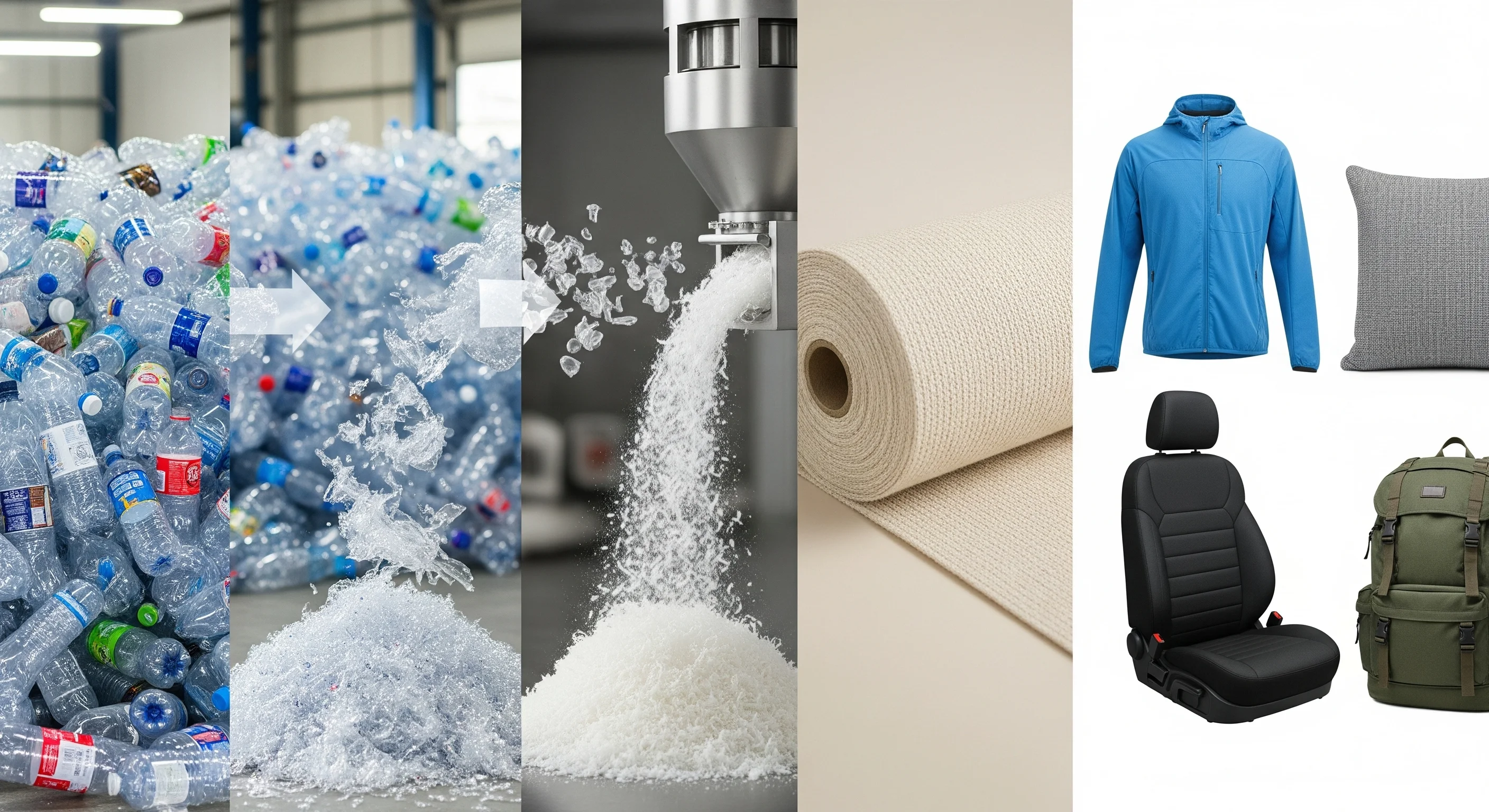
1. Fashion and Apparel
Recycled polyester is a popular discourse in the sustainable fashion industry, particularly in active wear, outerwear, and casual clothing. It is moisture-resistant and flexible and thus can be used to make gym wear and jackets. Lots of leading brands adopted rPET in order to express their intentions to be sustainable.
2. Home Textiles
In home textiles, recycled poly fabric is found in upholstered furniture and also decorative pillowcases. It offers a wash-and-wear, colorfast alternative to items that require an aesthetic finish and need to endure usage.
3. Industrial Products
Recycled polyester staple fiber finds its use not only in consumer markets but also has industry uses in automotive interiors, vehicle interior upholstery, manufacturers' insulation, and geotextile use. It is strong and economical to making it appealing to heavy-duty products.
4. Accessories
Eco-friendly accessories like backpacks, tote bags, and footwear increasingly feature recycled polyester. This not only adds durability but also helps brands position themselves as environmentally responsible.
Why Recycled Polyester Fabric Matters in Sustainable Fashion
As much as recycled polyester fabric has many benefits, it also has its challenges. As an example, recycling could lead to the release of microplastics and consequently depend on well-developed waste management systems. Nevertheless, advances in investments into research and technology are still enhancing the efficiency of recycling polyester textile and quality of the products, guaranteeing the future of this environmentally friendly substance.
-
Reduces Dependency on Fast Fashion: By opting for recycled materials like rPET polyester, fashion brands can reduce their dependency on resource-depleting practices associated with fast fashion.
-
Promotes Circular Fashion: Recycled polyester fabric embodies circular fashion principles, ensuring textiles can be reused, recycled, or repurposed.
-
Helps Meet Sustainability Goals: With many brands pledging net-zero emissions and lower waste by 2030 or 2050, recycled polyester is a critical part of achieving these milestones.
Challenges and Future Prospects of Recycled Polyester Fabric
As much as recycled polyester fabric portrays many benefits, it has its challenges. As an example, microplastics can be emitted during recycling processes and depend on effective waste collection systems. Nonetheless, investing more in research and technology still leads towards more efficient recycling and better products, making the future of this sustainable material even brighter.
Ongoing Developments
-
Advancements in Recycling Technology: New methods, such as chemical recycling, aim to enhance the efficiency and scalability of producing recycled polyester.
-
Consumer Awareness: Greater awareness and demand for eco-friendly recycled polyester clothing are driving the adoption of recycled polyester as a mainstream material.
Where to Get Recycled Polyester Fabric
When considering sourcing high levels of recycled polyester fabric, working with manufacturers and suppliers who are responsive to sustainability and high-quality products is important. Saheb Fibre is one such renowned brand that is a manufacturer and distributor of Recycled Polyester Staple Fiber (RPSF). The products available with Saheb Fibre include the recycled polyester fibers that are recommended in making textiles, automobiles, home furnishing, and other industrial products. When deciding to choose Saheb Fibre as the RPSF supplier, you would be contributing to the circular economy and making sure that the offered fabric would correspond not only to environmental standards but performance ones as well.
Final Thoughts
Recycled polyester fabric is more than a simple innovation; it is also a solution to some of the most important environmental issues of our era. This fabric also lessens the amount of waste, preserves natural resources, and promotes the circular economy since it recycles polyester fabric plastic and recycled PET bottles into high-quality, durable textiles.
It has a wide range of uses in all aspects of fashion, home ornaments and industrial goods, hence a very useful tool in brands and consumer markets. With recycled polyester, we not only choose material: we choose to shape a better, more sustainable future.
Next time when you are buying something, check on the label to see whether it's recycled polyester fabric and decide to buy eco-friendly materials. Such small measures can make a huge difference in making the earth greener for future generations.
